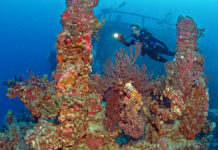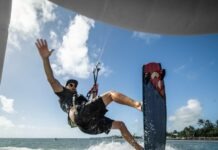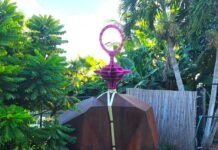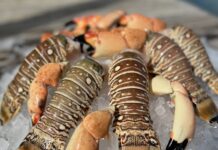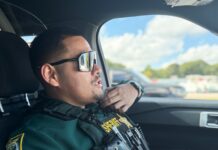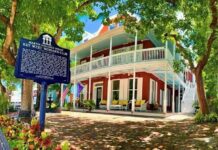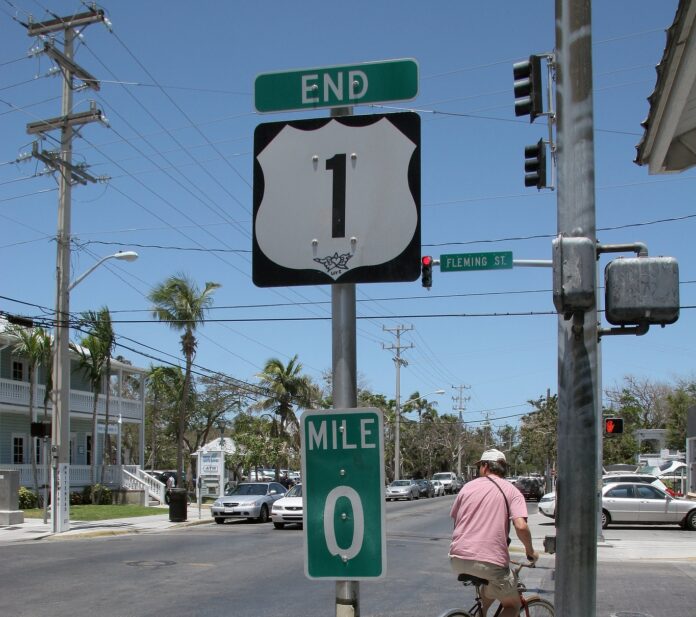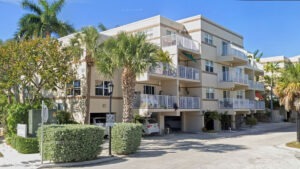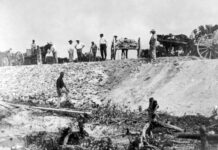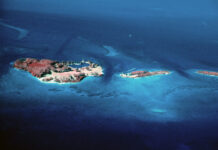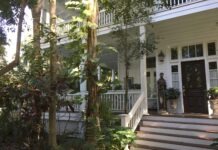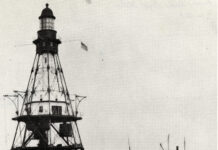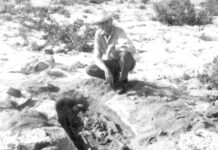The Great Florida Keys Road Trip comes to an end, not with a whimper, but a big Key West bang.
After crossing Cow Key Channel, the Overseas Highway name disappears and is replaced by a series of roads. It starts with a traffic light and two options: a left turn or a right turn. The left option follows South Roosevelt Boulevard and winds around the edge of the island, past the airport, Fort East Martello and the museum where the haunted Robert the Doll lives, Smathers Beach and ends at Bertha Street.
The right option follows North Roosevelt Boulevard and the last mile or two of the highway’s path. North Roosevelt skirts the other side of the island until it becomes Truman Avenue, which, like the Overseas Highway, has been called a name or two.
According to J. Wills Burke’s fun book “The Streets of Key West,” it started as a rocky path hacked out of the island’s hammock as a way for General John M. Brannan and his Union troops to avoid the island’s Confederate sympathizers, of which there were many, during the Civil War years.
Its earliest version was known as Brannan Road. Locals called it Rocky Road for the same reason locals once called the Overseas Highway Old Bumpy; the islands are built atop an ancient system of barrier reefs covered by a thin layer of topsoil. In 1870, Brannan Road was identified as Military Road. As the island’s population grew, it became a metaphorical line of division between what is called Old Town today and the rest of the island.
Old Town is now the Key West Historic District and covers the western half of the island. Because of the road’s placement, Military Road became Division Street. On Nov. 16, 1948, Division Street was renamed Truman Avenue to honor President Harry Truman’s many visits to the island. Truman Avenue cuts through the middle of the island and crosses Duval Street. One block beyond Duval is Whitehead Street. To find Mile Marker 0, turn right (if you’re coming from the east).
Before the much-anticipated green and white sign appears a few blocks away, there are several points of interest to note. The first is a lighthouse. There are nine lighthouses on and around the Florida Keys. Six iron lighthouses were built to mark dangerous tracts of coral along the Florida Reef: Fowey Rocks Lighthouse, Carysfort Reef Lighthouse, Alligator Reef Lighthouse, Sombrero Key Lighthouse, American Shoal Lighthouse and Sand Key Lighthouse. Each was placed in the Atlantic shallows miles offshore.
Two stand in the Dry Tortugas, about 70 miles southwest of Key West. One is on Loggerhead Key and the other is at Fort Jefferson on Garden Key. The last one is steps away from Whitehead Street.
The Key West Lighthouse is taller than it used to be. It stood 65 feet tall when it was first lit in 1825. After a hurricane destroyed the light in 1846, it was rebuilt. (The storm also devastated the Sand Key Lighthouse.) When it was again lit in 1848, it stood 50 feet tall. By 1894, Key West had grown up, both the buildings and the trees, and the lighthouse was raised another 20 feet.
Another thing that makes the Key West Lighthouse different from the others is that you can still climb the stairs, all 88 of them, to reach the top of the tower. The view might be the best in Key West. The lighthouse looms over Ernest Hemingway’s old house and the posse of six-toed cats that still call the property home.
Just ahead, at the corner of Southard Street, is the Green Parrot, one of the classic Key West bars that locals still flock to. It seems to have started as a grocery store owned by Antonio Sanchez in 1890. In the 1940s, it was a bar called the Brown Derby, a favorite air-conditioned haunt of the Navy. When the Navy left and the bar transitioned into the Green Parrot, the windows and the air conditioning were removed. Open windows, ceiling fans, and cold drinks are what’s left. Little has changed about this local treasure, once deemed by Playboy Magazine one of the best bars in America.
The Green Parrot is kitty-corner to the Monroe County Courthouse, one of the few places in Key West that you do not want to visit. Well, not on official business. Between the sidewalk, the chickens and the buildings is a magnificent kapok tree. It is one of the most photographed trees on the island. Native to southern Mexico, South America and West Africa, the massive tree can grow to 200 feet tall, and as much as 13 feet in a single year. There are eight kapok trees in Key West. This one, thought to have been planted in 1905, is the oldest.
On the other side of Whitehead Street, just before Fleming Street, is the green and white sign marking the end of the highway, Mile Marker 0. There is more to the sign than there used to be. As the road’s significance has grown, so has the pole to which it is securely attached. The road just traveled is more than the Overseas Highway and U.S. 1. It has been designated a National Scenic Highway. In 2009, it was declared an All-American Road, one of about 30 in the country.
Taking a picture of the iconic Key West marker is a rite of passage. It is not the end of the adventure. One of my favorite things about Key West is that, unlike most of the rest of the island chain, it is by and large a walking town. It is nice to be able to go somewhere on vacation, park the car and not have to open the door again until it is time to slip inside, start the engine and drive back up the highway. Two recommendations. First, stay hydrated. Second, wear comfortable shoes.
